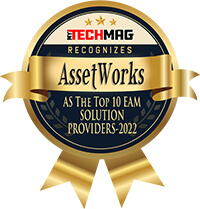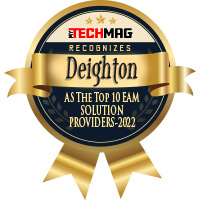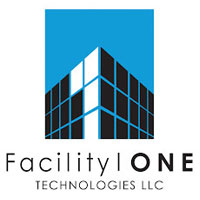

“EAM is important because it helps organizations track, assess, manage and optimize asset quality and reliability. Organizations of all kinds have hundreds, thousands, even millions of assets. They are asset intensive.”
When it comes to managing hundreds, thousands or even millions of smart, connected assets, enterprise asset management (EAM) is crucial. EAM is the combination of software, systems and services used to maintain and control assets and equipment. Broader and more comprehensive than a computerized maintenance management system (CMMS), EAM solutions also deliver enterprise integration with ERP, HCM and HSE systems. That means you can optimize the quality and utilization of assets throughout their lifecycle, increase productive uptime and reduce operational costs.
EAM is a combination of software, systems and services used to maintain and control operational assets and equipment. The aim is to optimize the quality and utilization of assets throughout their lifecycle, increase productive uptime and reduce operational costs.
Enterprise asset management involves work management, asset maintenance, planning and scheduling, supply chain management and environmental, health and safety (EHS) initiatives.
In the Internet of Things (IoT) era — with everything from valves to vehicles connected by sensors and systems — practitioners are incorporating advanced analytics and artificial intelligence (AI) into EAM. Data gathered from instrumented assets is analyzed using AI techniques. The resulting insights help maintenance teams make better decisions, enhance efficiency, perform preventive maintenance and maximize investments in their physical assets.
EAM is important because it helps organizations track, assess, manage and optimize asset quality and reliability. Organizations of all kinds have hundreds, thousands, even millions of assets. They are asset intensive.
Assets come in many shapes and sizes — railroads, pipelines, manufacturing equipment, transportation fleets, windmills — and include virtually any piece of equipment needed to sustain production, services and operations. EAM best practices help maintenance teams gain greater control of complex environments to:
- Centralize asset information: A CMMS, as part of EAM, tells maintenance managers where an asset is, what it needs, who should work on it and when. It automates critical asset management workflows and makes them accessible and auditable.
- Resolve issues before they happen: Asset management software supports preventive capabilities to maintain equipment for stable, continuous operations. It helps ensure warranty compliance and preempt issues that disrupt production.
- Monitor assets smarter: AI-powered remote monitoring delivers actionable insight into current and expected states of assets. It aggregates data across departments and information silos, allowing for fewer, more accurate alerts and enhanced decision-making.
- Maximize asset utilization: Historical and real-time data collected from IoT devices and analytical and diagnostic tools help extend the availability, reliability and usable life of physical assets.
- Manage aging assets and infrastructure: Equipment lifecycles are extended through more informed maintenance strategies and by embedding risk management into business processes to improve return on investment.
- Elevate maintenance management: IoT, AI and analytics enhance equipment maintenance practices. Asset tracking and traceability meet increasingly complex environmental, health and safety requirements.
- Consolidate operational applications: EAM helps establish a single technology system to manage virtually all asset types. Processes are unified and standardized for wide-ranging asset functions across an enterprise.
Managing Enterprise Assets
Operate and maintain high-value assets by using AI and analytics to optimize performance, extend asset lifecycles and reduce operational downtime and costs. Asset data analyzed with AI provides insights that help businesses make better decisions, enhance efficiency, perform preventive maintenance and maximize investments in physical assets. With monitoring, maintenance, computer vision, safety and reliability in a single platform, IBM is enabling the next generation of asset management.
Get the most value from your enterprise assets with Maximo Application Suite. It’s a single, integrated cloud-based platform that uses AI, IoT and analytics to optimize performance, extend asset lifecycles and reduce operational downtime and costs.
With market-leading technology from IBM Maximo®, you’ll have access to configurable CMMS, EAM and APM applications, along with streamlined installation and administration, plus a better user experience with shared data and workflows.
Key features of Maximo Application Suite:
- Leverage market-leading EAM, mobility, add-ons and industry models
- Enhance reliability with AI-powered monitoring, inspection and predictive maintenance
- Only pay for what you actually use with simplified licensing
- Use multicloud deployment for greater flexibility
Serving Clients Worldwide
As one of the 10 largest public transit agencies in the US, MARTA is crucial to the economic vitality of the fast-growing Atlanta metropolitan area. The authority serves 1.7 million residents, provides transit to more than 500,000 passengers a year and employs 5,000 people.
The infrastructure for the authority is equally impressive: over 338 rail cars provide service via 38 stations, and 550 buses carry passengers along 101 routes. The authority oversees six million square feet of facilities-related assets, such as administrative buildings, railway stations, rail yards and supporting equipment.
Managing these assets is a major undertaking — and a high priority for the organization. Not only are safety and regulatory factors tied to asset maintenance, but customer satisfaction and economic considerations exist, as well: a one-hour service outage can cost the authority hundreds of thousands of dollars, not to mention a potential loss in future ridership.
In fact, MARTA is a leader in transit asset management. Recently, it became the first North American public transit agency to receive the ISO 55000 certification, an international standard that demonstrates the authority’s assets are maintained and its systems are safe.
The certification is also is a key consideration for federal funding. Every year, federal representatives audit the authority to make sure assets are maintained up to standards. “It shows that we’re being good stewards with taxpayers’ money,” says Remy Saintil, Director of Facilities Maintenance. “We want to make sure all of our assets are working to their fullest capabilities and our systems are safe.”
The past few years have seen a move within the industry from a schedule-based to a predictive maintenance model. Fueled by a strong interest in using innovative technology to drive growth, efficiencies and cost savings, the MARTA facilities team wanted to test the waters to see if predictive maintenance would improve the reliability of its life-safety systems.
IBM’s involvement in the project started with a cold call. An IBM representative reached out to Saintil, sparking a series of conversations. “He introduced me to what IBM was doing with predictive maintenance and AI,” says Saintil. “From there, I wanted to see what cost savings and efficiencies it could deliver for the authority.”
MARTA launched a POC using the IBM Maximo APM – Predictive Maintenance Insights solution deployed on IBM Cloud to improve the asset reliability of its tunnel ventilation system. The solution uses machine learning to look for patterns in asset data, usage and the environment, and correlates them with known issues to help predict failures.
MARTA chose to limit the focus of the pilot to its tunnel ventilation system for several reasons. The system provides smoke ventilation using large fans and blowers to move air through the authority’s train tunnels and is critical from both safety and regulatory perspectives. It’s a complex system, with more than 500 components and multiple stakeholders, which makes it ideal for testing and potentially scaling to other systems.
The team inputted historical, preventive-maintenance-related information from MARTA’s enterprise asset management system — such as work orders, service requests, repairs, data alerts and weather data — and started using this information to generate models. For example, if MARTA was able to extend maintenance by a month or two, the technicians could use that time to perform other work.
“It showed the survival curve of certain assets and opened up a lot of doors to things we were missing,” says Saintil. “We were able to get predictions, and with dashboards, were able to see all data in one place. We didn’t have to go searching.”
From there, the project evolved. As MARTA got closer to achieving ISO 55000 certification, the team was able to apply information from the pilot to help develop a transit asset management plan, a federally mandated requirement for transit organizations.
Saintil and his team extended the pilot to include some of the information needed for the plan — such as asset inventory, condition assessments, performance measures and decision support tools.
After completion of the pilot project, MARTA has moved into full production with the predictive maintenance solution deployed in its tunnel ventilation system. One of the benefits the team anticipates from the implementation is the ability to address asset maintenance issues when needed, rather than relying on the manufacturer recommendations, which can result in over-maintenance.
It also anticipates more accurate condition ratings. In the past, these have been largely subjective, based on visual inspections of a piece of equipment. With the predictive maintenance pilot, MARTA was able to use machine learning to generate more objective condition ratings — which are required and audited annually by federal agencies — on an as-needed basis. “It’s almost like it’s alive, and it’s daily,” says Saintil, “so I can have a living, day-to-day condition rating.”
MARTA can also use the IBM Maximo APM – Predictive Maintenance Insights on IBM Cloud solution to adjust preventive maintenance schedules, which in itself is a cost saving measure. Technicians don’t have to do as many preventive maintenance checks and can spend more time tending to other issues and improvements.
Beyond the current project, MARTA is looking to address performance management of the health of the full lifecycle of an asset: monitoring reporting processes that enable predictions for future performance and risk, examining historical evidence, analyzing performance and root cause analysis. With this in place, if an asset breaks down, MARTA can more easily do a root cause analysis and go back and look at the data within the system. It can help MARTA better plan for capital budgets, as well.
Eventually, Saintil would like to expand the program to include not just life-safety systems like the tunnel ventilation system, but also operation-critical and operational support assets. “We’re on the leading edge in technology when it comes to public transportation asset management. When we talk with people from other transit agencies, it’s like, ‘Wow, we’ve never heard of anybody doing this.’ Not only that, but the reputation of IBM and Watson and what we’re doing together in this area backs it up. It’s something that’s really innovative.”
situs gacor rtp slot slot gacor






